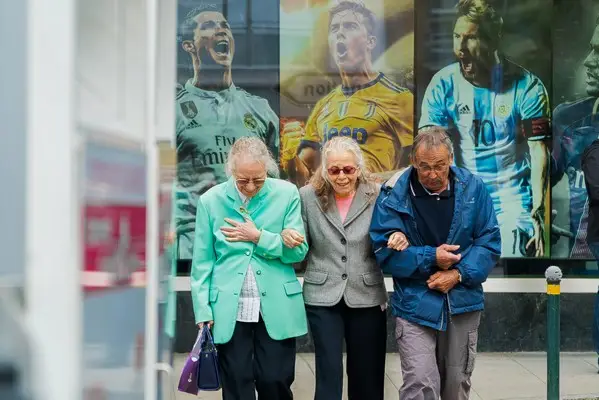Table of Contents
- Defining Late Modernity
- Characteristics of Late Modernity
- Theoretical Perspectives
- Implications of Late Modernity
- Conclusion
Late modernity, also known as high modernity, is a sociological concept that describes the current period in history, characterized by the continuation and intensification of modernity rather than its decline. Unlike postmodernity, which suggests a break from modernity, late modernity underscores the enduring features of modernity while acknowledging profound changes in social structures, cultural practices, and individual experiences. This essay will provide an in-depth outline and explanation of late modernity, examining its key characteristics, theoretical underpinnings, and implications for contemporary society.
Defining Late Modernity
Historical Context
Late modernity emerged as a concept to describe the period from the late 20th century onwards, marked by rapid technological advancements, globalization, and significant shifts in economic and social life. This era follows the classical period of modernity, which spanned from the Enlightenment through the Industrial Revolution, up to the mid-20th century. Classical modernity was characterized by the rise of nation-states, industrial capitalism, urbanization, and the development of scientific rationality.
Key Theorists
Several sociologists have been instrumental in developing the concept of late modernity, including Anthony Giddens, Ulrich Beck, and Zygmunt Bauman. Giddens emphasizes the role of reflexivity and the transformation of intimacy, Beck introduces the notion of the “risk society,” and Bauman discusses the idea of “liquid modernity.” These theorists collectively highlight the dynamic and often precarious nature of contemporary social life.
Characteristics of Late Modernity
Reflexivity
A defining feature of late modernity is reflexivity, which refers to the continuous process of self-examination and re-evaluation of social practices and beliefs. In late modern societies, individuals and institutions are constantly questioning and modifying their behaviors and structures in response to new information and changing circumstances.
Individual Reflexivity
At the individual level, reflexivity involves the continuous monitoring of one’s self-identity and actions. People in late modern societies are expected to navigate a plurality of choices and construct their identities through a series of lifestyle decisions. This heightened self-awareness can lead to greater personal autonomy but also to increased anxiety and uncertainty.
Institutional Reflexivity
Institutions in late modernity are also subject to reflexive scrutiny. Traditional institutions such as the family, education, and religion are constantly adapting to changing social norms and technological advancements. This institutional reflexivity is evident in the evolving practices within these domains, such as the diversification of family forms, the integration of digital technologies in education, and the pluralization of religious beliefs.
Risk Society
Ulrich Beck’s concept of the “risk society” is central to understanding late modernity. According to Beck, contemporary society is increasingly preoccupied with the management and mitigation of risks, many of which are global in nature and stem from technological and scientific advancements.
Manufactured Risks
Manufactured risks are those that arise from human activities, as opposed to natural risks. Examples include environmental degradation, financial crises, and technological failures. In late modernity, these risks are often unpredictable and have far-reaching consequences, necessitating new forms of governance and regulation.
Reflexive Modernization
Beck also introduces the idea of reflexive modernization, where society becomes aware of the risks it produces and seeks to address them through reflexive processes. This involves recognizing the unintended consequences of modernization and developing strategies to cope with these new challenges. Reflexive modernization thus highlights the double-edged nature of progress in late modernity.
Globalization
Globalization is another hallmark of late modernity, characterized by the intensification of worldwide social, economic, and cultural exchanges. This process has profound implications for social life, as local contexts are increasingly influenced by global forces.
Economic Globalization
Economic globalization involves the integration of national economies into a global market, driven by advances in technology, communication, and transportation. This has led to the proliferation of multinational corporations, global supply chains, and international trade agreements. While economic globalization can promote growth and development, it also exacerbates inequalities and creates new forms of dependency and exploitation.
Cultural Globalization
Cultural globalization refers to the spread and mixing of cultural practices and ideas across the globe. This results in greater cultural diversity and the creation of hybrid identities, but it can also lead to cultural homogenization and the erosion of local traditions. The global flow of information, facilitated by the internet and social media, plays a crucial role in shaping cultural globalization.
Transformation of Intimacy
Anthony Giddens’ concept of the transformation of intimacy addresses the changing nature of personal relationships in late modernity. Traditional, fixed forms of relationships, such as marriage, are giving way to more flexible, negotiated forms of intimacy.
Pure Relationships
Giddens introduces the idea of “pure relationships,” which are based on mutual satisfaction and emotional fulfillment rather than external obligations or social norms. These relationships are entered into and sustained through active choice, reflecting the broader trend towards individualization in late modernity.
Implications for Family and Gender
The transformation of intimacy has significant implications for family structures and gender roles. There is greater acceptance of diverse family forms, including single-parent households, cohabitation, and same-sex partnerships. Gender roles have also become more fluid, with an increasing emphasis on equality and shared responsibilities within relationships.
Theoretical Perspectives
Get the full article AD FREE. Join now for full access to all premium articles.
View Plans & Subscribe Already a member? Log in.





